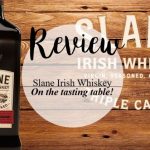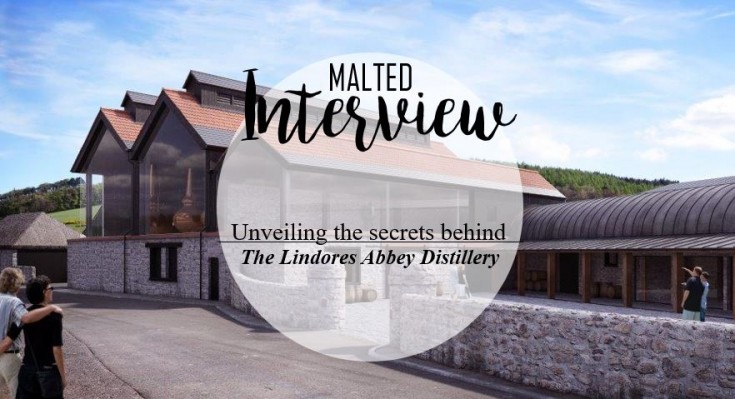
It is the birthplace of the “water of life”. Now, the site where the first recorded drop of whisky was made in 1494 is to be restored to its former glory with a new distillery and visitor centre. The derelict Lindores Abbey in Fife, where monks made whisky for King James IV in the 15th century, is undergoing a £5 million makeover in a bid to attract visitors worldwide and distil whisky once more.

Read more here
As the soon-to-be distillery is set to open in August this year, I was more than curious to find out more about their projects, distillery equipment, background… And of course the hopes of its founder for the future. I then got in touch with Drew McKenzie Smith, the man behind the rebirth of this fascinating place, who kindly agreed to answer my questions. 🙂
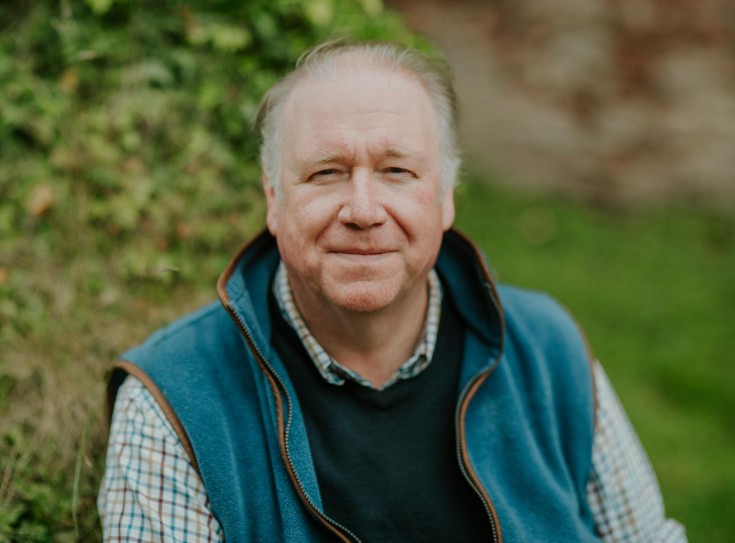
Tell me a bit more about yourself: where do you come from, career background etc. and how did you come up with the idea of building the Lindores Abbey Distillery?
Lindores has been in the family for over 100 years but it was around 1999, while working as a chef at Myres castle in Fife, that I first read of the famous exchequer rolls of 1494 and their link with Lindores Abbey. That same night I decided to test the water and contact a whisky society and ask what they thought about the idea of a visitor centre at Lindores Abbey.
Alphabetically, the first society that came up was the ‘An Quaich Society’ of Canada and the response (which I still have) was so full of enthusiasm for the project that I decided to give it a go. Initially I had a great deal of interest from Glenmorangie, but the industry was in a different place back then and eventually they withdrew and I let the idea drop. Nearly five years ago, I was contacted by my old friend Ken Robertson (ex-Diageo, ex-president of Keepers of the Quaich) and he suggested that now was the time for Lindores. That spurred me on to re-launch the project and now here we are just a few months away from opening.

What’s your personal relationship with whisky: first sipped, any noticeable milestone in your malted journey? A favourite production country/flavour profile/distillery/expression?
First experience was as a boy on a fishing trip with my dad. He and the ghillie were sharing a dram and full of bravado I asked for one, it ended up being 95% water to 5% whisky! Several years later he visited Lindores and we shared a dram and it was then (aged about 19 years old) I realised what all the fuss was about and I haven’t looked back since.
My wife Helen and I worked at Cadboll House, the Highland home of Glenmorangie, and I’ve always been a fan of Bill Lumsden’s skills as well as enjoying the odd Ardbeg. Kilchoman is another favourite, but I’m open to new experiences and am currently enjoying Chichibu’s The Floor Malted expression I bought a while back – it’s all a learning curve.

You’ll distill whisky within an historical location with strong links to Scotch whisky history: how much of a challenge has it been so far? Which stage of the project are you at right now?
It’s been a ‘journey’, but an enjoyable one. We were absolutely delighted to receive not one single objection to our planning, which demonstrates how the local community has embraced the distillerry. I often hear it being discussed by locals as ‘our distillery’, which is great.
We had to conduct a great deal of archaeological work before commencing the build and I was in two minds – part of me was very interested to see what (if anything) lay below the soil, but equally I was nervous as to what may be down there. They had to bury people somewhere after all! The archaeology exposed walls that had been buried for over 400 years, so it was a privilege to see that and in turn that has helped our team of experts draw up an image of what Lindores looked like in its heyday. The monastery was far, far bigger than we had imagined. We have also unearthed something that is truly historical but are awaiting our experts to confirm their initial thoughts before we go public.
For me it’s great that soon people will learn more of the Abbey’s fascinating past. As it has been privately owned for so long most people have no idea it even exists yet it has a massive history, including Kings, warriors and major incidents of Scotland’s history. Through our visitor centre people can share in this history and learn that whilst the core of our project is the spirit produced in the distillery, the Abbey is well worth a visit.
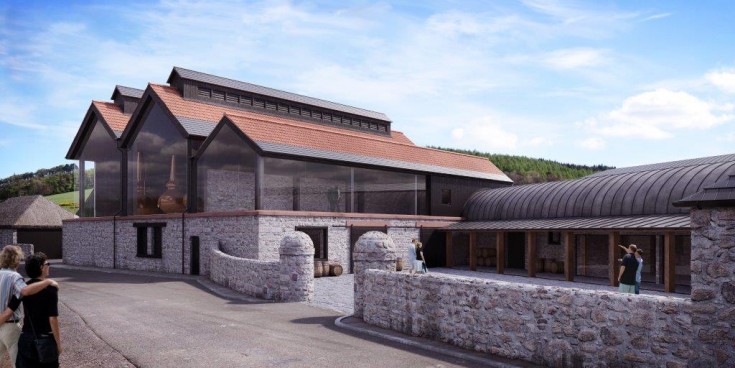
What is the next step? When do you think the distillery will be able to start production?
The build is almost complete and Forsyths are coming on site this month to commence the turn-key installation, with a view to us commissioning the equipment through July and opening in August, if all goes to plan.

Could you describe the soon-to-be distillery in one sentence?
A truly magnificent building, worthy of its history, and a very personal legacy to my own family who bought it and then retained it since 1913.

What will be the production capacity of the distillery, with what kind of equipment & special characteristics (specific yeast? locally-grown barley? etc.) – and apart from whisky, are you planning to produce any other spirit?
Right now we are installing three stills and four washbacks but we’re still debating adding a further washback This could push our production capability from @150,000LPA to @750,000LPA, so it’s a big decision. It’s about gauging the thirst and expectation for the first spirit to flow at Lindores for over 500 years. The three still set up is quite unusual, with one wash still and two smaller spirit stills. This was because our lead consultant, the late Dr Jim Swan felt that he was getting fabulous results from a similar set-up elsewhere, largely due to the increase copper contact. Our cask profile was implemented by Jim and we will carry on where he left off. Initially, I felt I had Friar John Cor looking over my shoulder and now I want to make sure that the spirit we produce at Lindores would have met with Jim’s approval too.
We will grow our own barley across Lindores and at my neighbour (and cousin’s) farm at Parkhill. It will all be Fife barley that goes into the Lindores Abbey single malt. We did look at producing a gin/vodka and absolutely understand why most distilleries do this, but there are a lot of them out there and perhaps more importantly the monks of Lindores didn’t produce gin! For me it became obvious, the 8 bols that Friar John Cor paid duty on were to make Aqua Vitae. It would have been ‘new make’ spirit which was initially really for rubbing on wounds etc and then – as humans do – one person must have thought it might be worth drinking. After which, to make it palatable, they started experimenting with whatever grew at and around the monastery. We also know that the monks traded their salmon at Flanders, where they picked up cloth and spices amongst other things, so to the herbs and plants of our aqua vitae we can add spices, and on top of this we can add honey as the monks kept beehives, which we will re-introduce next year.
I have been working closely with Heriot-Watt University amongst others to create recipes and once we have got it right we will be launching. As for yeast, I will have to ask Gary Haggart, our new Distillery Manager but what I would love to do at some stage is to try and do a special bottling where we can use the wild yeast that was isolated when a PHd student at Heriot Watt did his thesis on what (if any) wild yeasts still existed at Lindores that would have been existent back in 1494. The student narrowed it down to one, which I believe is still lurking in a petri dish at the University.

You’ll be producing Lowlands single malt, do you think the geographical classification of Scotch is still relevant these days?
Not really, ironically we own the land down to the low water mark of the river Tay right in front of the distillery and if you get your old school ruler and place it on the line from Dunoon up to Dundee you will see that we are bang on the line. But we will be perceived as a Lowland distillery although conversely we are located further north than Tullibardine, which is Highland single malt.

Do you plan to open a visitor centre? How do you think the distillery will stand out within Scotland’s (and Fife) touristic offer?
Our visitor centre will be unique. It will be about so much more than just whisky, though I will always stick to my promise to Jim Swan that the spirit is the single most important part of this project. We will be showing visitors what the Tironensian monks brought to this area and, whilst that includes brewing and distilling, it also demonstrates fruit growing and bee-keeping, education and music amongst many other things.
We have a fifty foot long oak table in the cloister that by day will be part of the exhibition and by night a fantastic place for a banquet; our bar and tasting room on the first floor has floor to ceiling windows looking out over the Abbey, so you can enjoy a dram looking at the spiritual home of scotch whisky out of one window whilst also being able to see directly into the still room where the dram you are drinking will have been produced, through another.
Our visitors will be able to tour the Abbey as well as the distillery, but possibly the most unique offering will be a visit to The Apothecary. Here you will be able to create your own aqua vitae under the watchful eye of our apothecarist. Everyone’s recipe will be recorded in our ‘big book’ and if someone gets home and wants to share their brilliant concoction with their friends and family then we will be delighted to send them some more bottles using their own unique recipe.
We believe our distillery and visitor centre will bring many visitors to this quiet corner of Fife. There will be people visiting the nearby V&A; golfers heading to St Andrews; as well as whisky enthusiasts from across the world who may be following the words of the late great whisky writer Michael Jackson who wrote of Lindores “For the whisky-lover, it is a pilgrimage’

New distilleries are spreading all over the country: do you see this as a threat or an opportunity?
I think the more the merrier and wish them all the best of luck. I think things will level out a little and possibly gin is overheating, but as far as whisky goes there is a big world out there and we look forward to introducing it to Lindores Abbey.
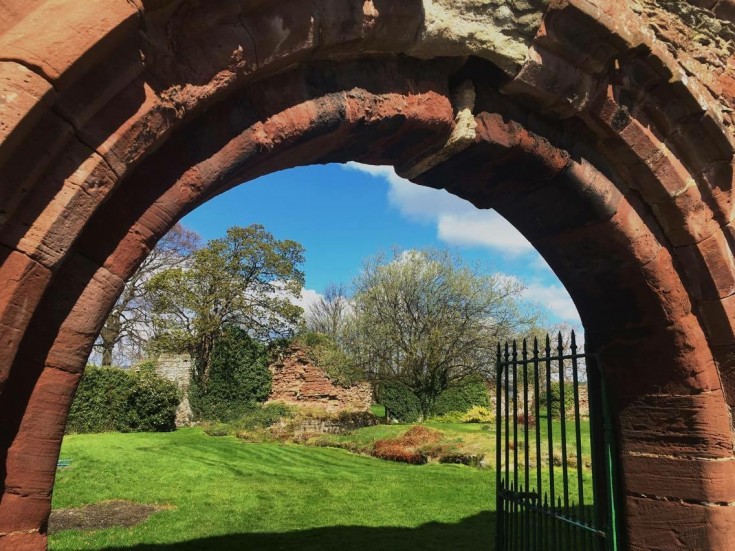
Do you consider the future distillery as a craft distillery, and so, why? “Craft” has still no official definition and is being overused… How would you personally define “craft”?
I feel craft is overused, as is artisanal. It’s insulting to individuals who work for big industry players to say that someone in a tiny distillery is necessarily applying more craft and is more artisanal, after all there are third generation coopers at Diageo who show as much art and dedication to their craft as their counterparts elsewhere.
The monks of Lindores were true artisans – they were carpenters, builders, plumbers etc as well as being craftsmen through caligraphy, illustration and music, so whilst I understand that small producers can benefit from collaboration and information exchange, I don’t think it serves anyone to try and denigrate the big boys. We‘re all in the same game, some are just bigger than others.

How do you see the future for the Lindores Abbey Distillery: how do you picture the distillery in 10 years time? Any dream you’d still like to achieve?
I see the distillery (and Abbey) full of happy people who have come from around the world to visit us. Under one arm they will have a bottle of Lindores Abbey single malt that has just won best whisky in the world, and the other arm they will have a bottle of Lindores Abbey Aqua Vitae that has just been awarded best aqua vitae in the world -admittedly that will be a slightly smaller category! This would mean that I had kept my promise to Jim.
It would be all too easy to turn Lindores Abbey into a sort of Disneyland for whisky. We want people to recognise Lindores as a serious brand that over time will be acknowledged as a world class single malt. At the same time I would like to see the Abbey itself preserved for the future with funds raised through membership of our ‘Lindores Abbey Preservation Society’ to ensure it stands for another 500 years. If we can do both these things I’ll feel I’ve accomplished something.
______________________________________________________________
Pssst! You can follow life at Lindores Abbey Distillery at http://lindoresabbeydistillery.com/, or on their Facebook page. All ‘1494’ members of the Lindores Abbey Preservation Socitey will be entered into a ballot to win one of the first Lindores Abbey Single Malt casks to be filled this year. The cask will be a 200L ex-Woodford Reserve bourbon barrel, and all associated duty and bottling costs will be paid for the new owner, once the spirit reaches at least 3 years of age.



